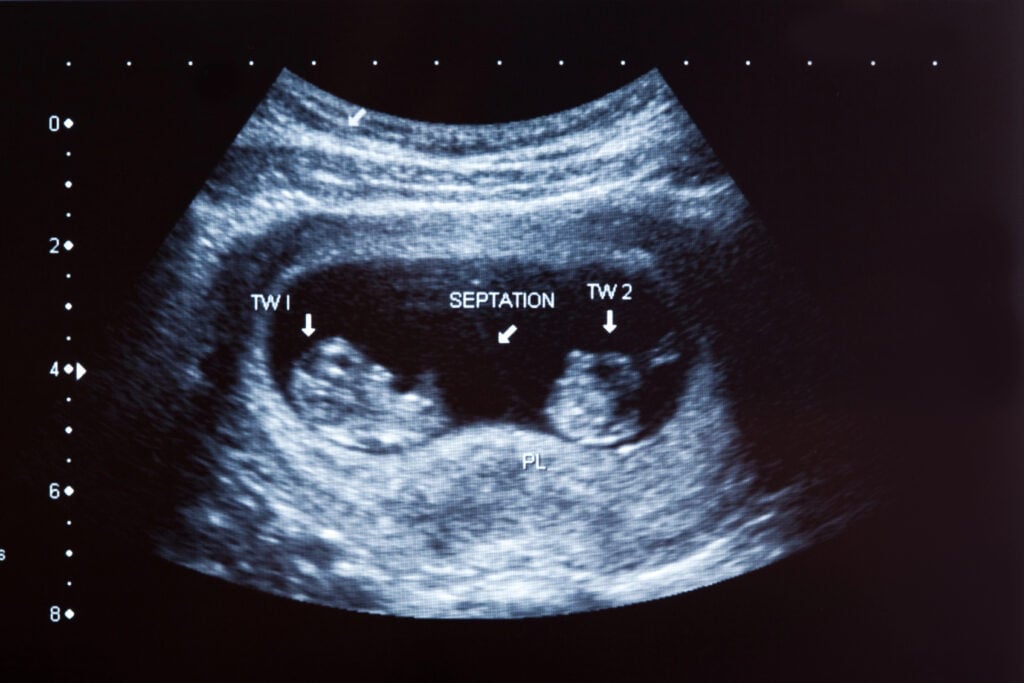
In the United States, preterm birth affects about 1 in every 10 babies, making it one of the most pressing maternal and infant health concerns today. That comes to more than 370,000 preterm births each year, or roughly 7,000 babies born too soon every single week.
The national average, however, doesn’t tell the full story. According to the March of Dimes Prematurity Profile, Black infants face a preterm birth rate of about 14.7%, compared to 9.5% among White infants and 10.1% among Hispanic infants, underscoring a persistent and worsening gap that continues to affect families of color most heavily.
The Numbers Behind Preterm Birth in the US: A Rising Crisis
Over the last decade, the national preterm birth rate has hovered between 9.6% and 10.2%. In 2020, the rate stood at 10.2%, showing little change despite public health goals aimed at reducing it. Out of nearly 70,000 babies born in a typical week, about 7,009 arrive early.
According to a March of Dimes report in 2020:
- 1,072 babies per week are born very preterm (before 32 weeks).
- 5,135 babies per week are born late preterm (34 weeks to 36 weeks).
- The rest fall between 32 and 36 weeks.
The 2024 preterm birth study did not break down the numbers by babies per week, but given the increase in overall preterm birth rates, those numbers would be slightly higher on a week-by-week basis. We’ll examine the worsening 2024 preterm birth rates in a moment and highlight key findings from the latest report.
These early births often bring challenges such as breathing problems, feeding difficulties, and developmental delays. Preterm birth also remains one of the leading contributors to infant mortality, with 35.8% of infant deaths tied to prematurity.
Beyond the human cost, the financial burden is immense, with an estimated $25.2 billion spent each year on prematurity-related healthcare, education, and lost productivity.
What’s New: 2024 Report Card Highlights
The March of Dimes 2024 Report Card presents new findings that highlight persistent challenges and emerging trends.
Most troubling may be the number of preterm births that occurred in 2023, with the national average jumping from 10.2% to 10.4%, the highest level in recent years, according to the March of Dimes. The study found that 370,000 babies were born too early in 2023.
Other significant findings include:
- Inadequate prenatal care reached 15.7% in 2023 — the highest in a decade.
- Prepregnancy hypertension rose over 10% in one year and is now a more prominent driver of preterm risk.
- Environmental exposures were added to the mix: nearly 40% of birthing people face extreme heat risk during pregnancy, and nearly three in four face poor air quality—all linked to higher preterm risk.
Preterm Birth By State And Race
The March of Dimes notes that in 2020, 21 states had preterm birth rates above the national average, while 16 states met or fell below the Healthy People 2030 target of 9.4%. In 2023, the number jumped to 24 states experiencing worsening preterm labor rates. The 2024 study specifically found that Southeastern states had more severe worsening rates.
The racial and ethnic breakdown shows striking disparities in preterm birth rates, with black mothers experiencing preterm birth at a rate nearly 3% higher than the next group, American Indian / Alaska Natives.
Here are
| Group / Race-Ethnicity | Preterm Birth Rate (2018–2020) |
|---|---|
| Black infants | 14.2% |
| American Indian / Alaska Native infants | 11.6% |
| Hispanic infants | 9.8% |
| White infants | 9.2% |
| Asian / Pacific Islander infants | 8.8% |
| National Average | 10.2% |
Here’s how those numbers compared in the 2024 study, for the newer reprot, Asian and Pacific Islander were separated.
| Group / Race-Ethnicity | Preterm Birth Rate (2021–2023) |
|---|---|
| Black | 14.7% |
| American Indian / Alaska Native | 12.4% |
| Hispanic | 10.1% |
| White | 9.5% |
| Asian | 9.2% |
| Pacific Islander | 12.4% |
| National Average | 10.4% |
These figures show that Black infants are about 1.6 times more likely to be born preterm than White infants. Experts note that these differences reflect a combination of structural inequities and maternal health disparities, as well as access to quality prenatal care.
What Counts as “Preterm Birth”?
Doctors define a preterm birth as any delivery before 37 completed weeks of pregnancy. The earlier the birth, the greater the risks for both mother and baby.
- Late preterm: 34 to 36 weeks
- Moderately preterm: 32 to 34 weeks
- Very preterm: 28 to 32 weeks
- Extremely preterm: before 28 weeks
Babies born extremely preterm often require intensive care and face higher chances of long-term complications, although advances in medicine have significantly improved survival. Even babies born late preterm may still need specialized support in the first weeks of life.
What Increases the Risk of Preterm Labor?

Preterm labor can occur in anyone, but certain factors increase the likelihood. Parents.com and the Mayo Clinic Health System highlight several factors that may lead to preterm birth. Expectant mothers should be aware of the following potential causes of preterm birth.
- A previous preterm birth
- Carrying twins, triplets, or more
- High blood pressure, diabetes, or preeclampsia
- Short spacing between pregnancies (less than 18 months)
- A shortened cervix or uterine/placental complications
- Smoking, alcohol, or drug use during pregnancy
- Certain infections, including urinary tract infections and STIs
- Being underweight or obese before pregnancy
- Limited or delayed access to prenatal care
The March of Dimes data adds further detail: 31% of pregnancies occur within 18 months of a prior birth, 14.8% of women of childbearing age smoke, and 31% enter pregnancy obese. In addition, 11.6% of women between the ages of 15 and 44 lack health insurance, a barrier that can delay or prevent prenatal care.
Warning Signs Of Preterm Labor Expectant Moms Should Watch For
Doctors emphasize that knowing the symptoms of preterm labor can save lives. According to the Mayo Clinic Health System women should call their healthcare provider immediately if they experience:
- Regular contractions before 37 weeks that don’t ease with rest or fluids
- Vaginal bleeding or spotting
- A gush or trickle of fluid that could mean the water has broken
- Persistent lower back pain or pelvic pressure
- Unusual cramping or changes in vaginal discharge
Even if these symptoms don’t always signal labor, they should never be ignored.
When To Call The Doctor
If you suspect preterm labor, don’t wait. Medical teams may use observation, hydration, or medications to delay delivery. They may also give corticosteroid injections to help a baby’s lungs mature. As Children’s Hospital of Philadelphia explains, even gaining a few more days or weeks inside the womb can make a measurable difference for a baby’s survival and long-term health.
The Takeaway For Expectant Parents

Preterm birth remains a serious challenge in the United States, affecting one in ten babies and contributing to more than a third of infant deaths. Families of color, particularly Black and American Indian communities, face higher rates of prematurity, reflecting deep-rooted inequities in maternal and infant health.
For parents, the message is clear: attend all prenatal appointments, manage health conditions, avoid smoking or alcohol, and know the signs of early labor. While not every preterm birth can be prevented, swift action and timely medical care can give babies the best possible chance. For more details, visit the CDC’s preterm birth page and the March of Dimes U.S. Prematurity Profile.
Most Asked Parent Question
How common is preterm birth in the United States, and what should parents know about the risks?
About 1 in 10 babies in the U.S. are born preterm each year, with risks higher for Black and American Indian families and serious health impacts for infants.
- In 2020, about 1 in 10 babies (10.1%) in the U.S. were born preterm, totaling more than 370,000 infants. source Government
- On average, about 7,009 babies are born preterm every week in the U.S., including more than 1,000 born very preterm (before 32 weeks). source association
- Black infants have the highest preterm birth rate at 14.7%, compared to 9.5% for White infants and 10.1% for Hispanic infants. source association
- Preterm-related complications account for 35.8% of all infant deaths in the United States as of 2020 and has likely increased in 2025 based on previous upward trends. source association
- The estimated annual societal cost of prematurity in the U.S. is $25.2 billion, including medical care, education, and lost productivity. source association
- Risk factors for preterm labor include a history of preterm birth, high blood pressure, diabetes, short pregnancy spacing, smoking, and obesity. source Guideline
- Warning signs of preterm labor include regular contractions, vaginal bleeding, fluid leakage, persistent back pain, or pelvic pressure before 37 weeks. source Editorial
